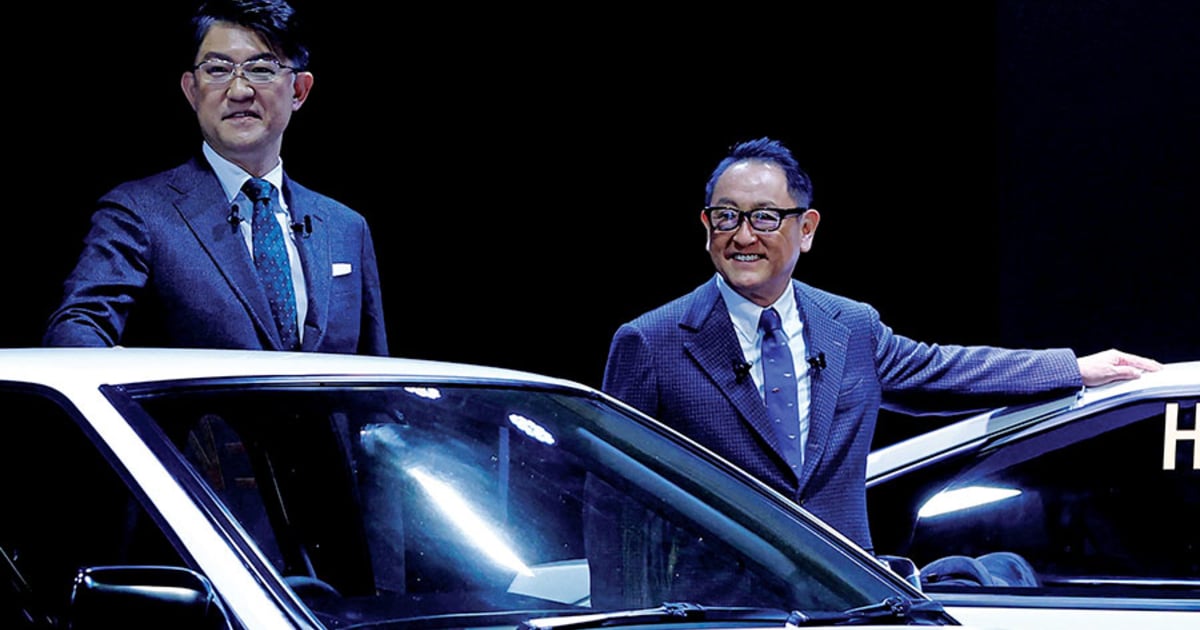
I have little doubt that Koji Sato, the next CEO of Toyota Motor Corp., will move the automaker in a different direction — or at the very least, at a slightly different pace — than his predecessor, Akio Toyoda, when it comes to battery electric vehicles.
The question is: Should he? The investor community and EV promoters (whom some call EVangelists, which is a fabulously rich descriptor) certainly believe so. I’m not so sure, however — let me tell you why.
During a conversation onstage at the J.D. Power Auto Summit at the NADA Show in Dallas last month, Toyota sales head Jack Hollis leaned forward, cupped his outstretched hands together as though he were capturing rainwater and explained his company’s somewhat controversial EV strategy in a different way.
“Imagine,” the former professional baseball player said softly, that his hands contained enough lithium to build one battery for one BEV. With this amount of the mineral, “I can build one $68,000 EV. Or I can take this amount and build batteries for seven $48,000 plug-in hybrids,” he said, keeping his hands still. “Or I can take this amount and build batteries for 109 $30,000 Priuses with almost identical reductions in emissions.”
“Which should I do?” Hollis asked the rapt audience rhetorically. “If the goal is only about making electric vehicles, I make the one BEV. But if the overall goal is to reduce carbon emissions, then the best use of this mineral is to make the hybrids, because that lets more people participate and drives down emissions quicker.”
Watching this in real time, and talking to Hollis later, it occurred to me that the longtime Toyota executive had hit on something uncomfortable that typically gets ignored in the industry’s ongoing discussions about EVs, especially as it relates to investors.
Who gets to help fight climate change?
We all live on the same planet, and we all are beginning to see the weather impacts that science said are attributable to climate change in one form or another. Yet right now, investors and EVangelists on social media want to mandate a kind of purity test on those willing to help.
It’s as though there’s a raging forest fire coming up the hill, but the neighborhood watch tells you to go home and put your garden hose away because you’re not driving a fire truck, and only fire trucks can fight fires. Your water apparently isn’t good enough, and your contributions and those of your similarly equipped neighbors — who collectively can throw a lot of water on the blaze — don’t count for spit.
Cutting carbon emissions by any and every means necessary is the reason this industry has spent hundreds of billions developing hybrids and BEVs in the first place; it certainly wasn’t to make money. Yet the key to actual success in cutting emissions requires democratization of the goal and collective actions, especially across the transportation sector.
Hybrids and plug-in hybrids have had and will continue to have a role to play in reducing transportation emissions, especially in this period when charging infrastructure is not yet sufficient to service a full transition to an all-electric fleet. If fleet dynamics were logical and already based on a goal of ensuring the fastest reduction of carbon emissions possible, hybrids would be standard equipment, regardless of automaker or vehicle line.
They’re not, of course, which is why we are where we are.
Sato has a huge job ahead navigating Toyota through the next few decades, and he’ll no doubt have to make some tough choices that will pit logic and sound business principles against a vocal mob of purists ready to reject anything short of full battery electric, regardless of circumstances.
I wish him luck, because I think he’s going to need it.